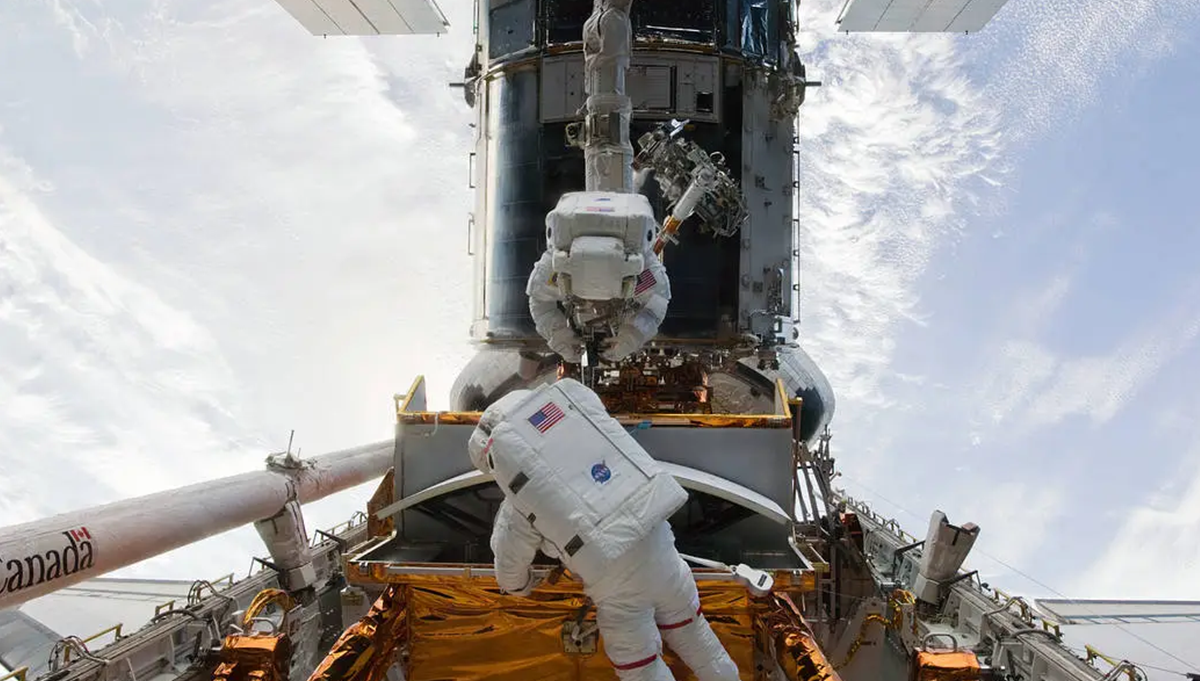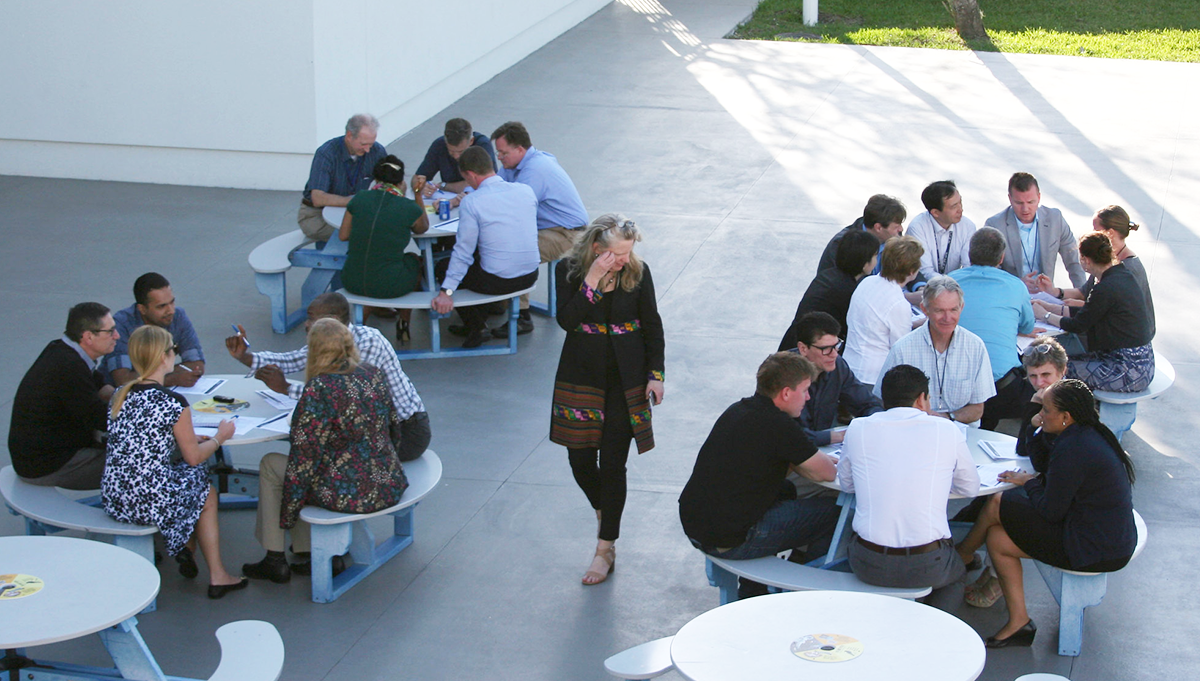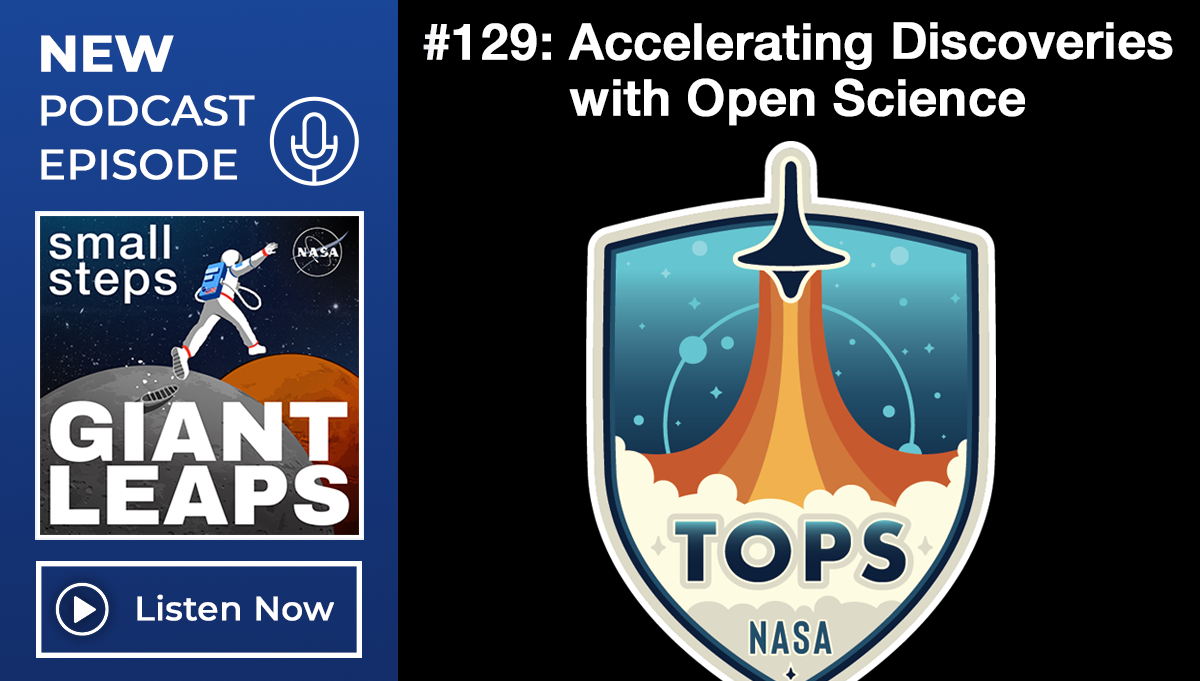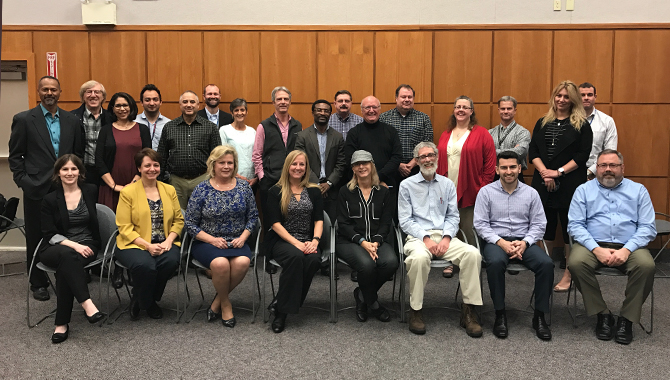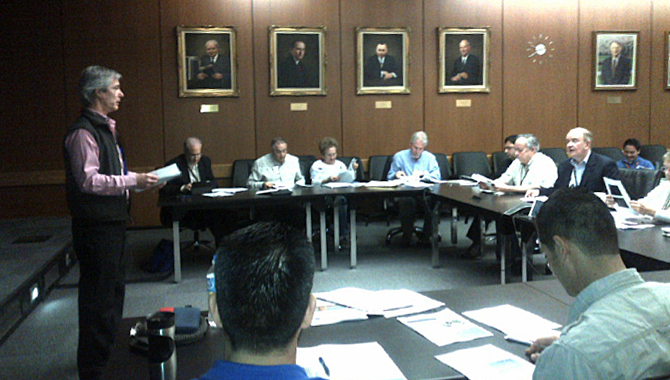
Ed Hoffman, agency CKO, David Oberhettinger, JPL CKO and Frank Mortelliti, Division Manager, JPL join the safety managers’ case study sessions with Ed Rogers, GSFC CKO.
Photo Credit: NASA
JPL and GSFC CKOs partner to offer case studies at JPL.
NASA’s federated approach to knowledge management seeks to leverage the respective strengths of the various NASA Centers. For example, JPL has held weekly meetings of a formal Lessons Learned Committee since 1984, while GSFC has exhibited leadership in promoting the case study approach to learning. Hearing that the GSFC CKO, Dr. Edward W. Rogers, had developed over 50 case studies to enhance learning at workshops, retreats, and conferences, JPL management wished to explore the suitability of this approach to learning within the JPL culture. Dr. Rogers’ seminars at venues like NASA PM Challenge have shown that case study presentations can make discussion of spaceflight project and mission incidents attractive and engaging by involving people in the simulated decision making process.
David Oberhettinger, JPL’s Chief Knowledge Officer (CKO), and Minh Le, Knowledge Management Specialist, invited Dr. Rogers to showcase the case study methodology, which was made popular by Harvard Business School, during the week of February 17, 2014. Over two days, the GSFC CKO trained over eighty JPL safety and mission assurance personnel on the case study methodology, and he conducted four case study sessions at different venues including a monthly meeting of all the JPL project managers. JPL is evaluating the results with an eye toward developing a set of case studies centered on recent JPL missions that might offer constructive lessons.
Ed Rogers facilitates the Flight Safety project manager’s meeting case studies.Photo Credit: NASA.
A sampling of the cases written by Dr. Rogers and used for the sessions included: Launching the Vasa, Wait, Wait, Don’t Launch, Lifting NOAA-N Prime, Sitting on the Fence – Launching a Balloon in the Outback, The Building Five Flood: Little Cap that Couldn’t, The NFire Launch: Beating the Sophomore Slump at the Wallops Range, and The CALIPSO Mission: Project Management in the “PI Mode”. Two other cases included were Cover Blown – The WIRE Spacecraft Mishap, (Steve Lilley), and Who’s in Charge? (Bo Lewis).
CKO Project Manager, Susan Snyder, recently sat down with JPL Jan Chodas, Director for the Office of Safety and Mission Success (OSMS), and Karla Clark, Division Manager, Mission Assurance Office, to find out what they hoped to accomplish using the case study approach to learning, and what they are doing next to build on the experience.
Question: What interested you about using cases as a method of sharing knowledge?
- Jan: David advertised that Ed Rogers would do a case study at the PM meeting, which is one I attend. I thought it sounded interesting and wanted to find out more before that meeting. Minh Le came over and met with a few of us, explained what Ed was coming out to do, the approach etc. I value looking at learning in different ways – if this is something that Goddard is known for, having Ed visit is a way to learn about it and about how we could use it. I heard MER was going to do a session, so we extended Ed’s stay to do two sessions for the following morning and afternoon for my teams. This case study approach was well practiced at Goddard – and it would be interesting to have our people experience it firsthand.
Question: What did you know about using case studies and what benefits did you expect as an outcome?
- Jan: I wanted people to be exposed to a different type of learning – and, I wanted them to have fun. I wasn’t able to go to all of the sessions, but I heard the participants really enjoyed the experiences. I wanted to show them a way of learning that was different and captured people’s interests. I also like team building learning opportunities.
- Karla: I knew about it from business school, and from week-long learning off-sites I have attended here. The facilitation I’d seen was different, but the concepts are similar. In Ed Roger’s approach, you don’t get answers, but you get questions that drive thought.
Question: In your words, how does the case study approach differ from other traditional learning approaches you and your teams have experienced?
- Jan: We had a meeting with Ed Rogers ahead of time about how to develop a case study. He made a comment that I didn’t fully appreciate until I went through the case study. He said, “I want to put you in an uncomfortable position.” When we were in the case study, we would give the rote answers to a problem the case posed, and Ed would say, “They tried that, and it didn’t work – what are you going to do now.” It makes you think beyond the first answer. I valued that most about his facilitation – you can read a case study and see the creeping requirements, the lack of communication, but in the process of facilitation, Ed creates a deeper quality of thinking to the problem-solving process.
- Karla: Participants learn a lot more by using a case approach. In a case study session, you are an active participant. You are engaged, and in the act of engaging, it is easier to remember and learn from the experience. If you are in the back of the room, and not engaged, you won’t learn. Case approaches stimulate the brain cells.
Question: What did you learn from the case study sessions?
- Jan: That is it – the rote answer isn’t the right answer.
- Karla: Skeptics will come out of a session like this thinking that it is just one more meeting, and they won’t learn. People going in with an open mind, they did learn. Everyone I talked to were happy they went to the case study.
Question: What’s next?
- Jan: We are developing a PM class here at JPL – I talked about my experience with Ed with Chris Jones – he requested the PM class – I gave him the feedback that it would be great to include cases. The first PM class will take place in the summer or fall, and we’d like Ed Rogers to join us at that time.
- Karla: We are putting together an introduction to a new organizational orientation. It will be a one and a half day, and we are thinking about what we really want them to know – the foundations. We are including NASA failures, quick and thought-provoking introductions to the work we do, and what we expect from the new employee. The goal will be active learning, not a whole set of power points. This can set the tone for new people, i.e. “We expect you to engage with JPL, so ask questions, and don’t sit in your office. Engage with your colleagues.”
| Jan Chodas, Director for the Office of Safety and Mission Success (OSMS). | |
| Karla Clark, Division Manager, Mission Assurance Office (MAO). |


